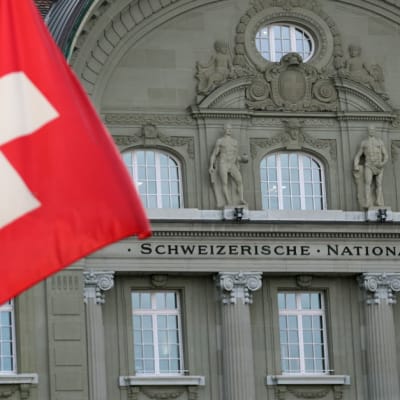Fixed Income Market overview
March brought heightened geopolitical turmoil with landmark developments in both the US and Europe seeing Fixed Income post its first negative month of the year, culminating in the unveiling of an enormous tariff program in early April which sent vast risk off waves across markets. Focusing just on March moves, prior to the April announcements, European treasuries were the sizable underperformer, whilst spreads in high yield also suffered. US Treasuries were the only positive for the month, also supporting US IG corporate total returns to near flat for the month. Sectoral spread moves were broadly in line, with the only notable underperformance coming in the final week of the month from Autos as the crosshairs of tariff action fell upon them.
The month began with a sharp U-turn on fiscal spending rules in Europe, as the new German administration drew up plans to remove fiscal spending limits and push through an unprecedented fiscal package of infrastructure and defense spending. The market reaction was equally unprecedented, with bunds delivering the largest 1 day move in over 30 years, rising ~30bps on the day. The move comes to compensate for the loss of reliance upon US military support under the new Trump administration, with their shift in stance on the Russia-Ukraine situation causing a sudden shock to international allegiances. In a quite remarkable move, the plan was passed through the incumbent Bundestag, before the first sitting of the newly elected government, to ensure its passing, underlining the urgency deemed necessary by European powers to get it over the line.
Not to be outdone, the political action on the other side of the Atlantic was equally as drastic. The Trump administration ramped up tariff talk and action, with targeted measures on several close trading allies, ranging from Candain Lumbar to European wines. The largest of which came towards month end, with a 25% tariff on autos globally, with a warning that tariffs plans were real and not just for negotiation purposes. The start date of these measures was added to an agenda for April 2nd, which was increased in prominence and dubbed 'Liberation day', with promises of unveiling a full tariff program.
The unveiling of the April 2nd tariffs was a monumental event, with the levies coming in much higher and broader than anticipated. A minimum level of 10% globally was implemented (with the notable exclusions of Canada and Mexico) with what was described as a reciprocal tariff regime applied to others. However, the numbers showed little resemblance to actual tariffs levied on the US, being more closely linked to trade balances as a percent of US exports. This left Emerging economies particularly hit, with the EU and Japan also heavily hit. Fall out is ongoing but the market reaction has been heavily risk off, with spreads spiking higher and yields falling, as negative growth concerns heavily outweighs the upside inflation impact.
Central bank meetings in the month were largely as expected, with the Fed holding and ECB cutting, but both unwilling to commit to their next moves with such uncertainty around the impact of fiscal events. The Fed in particular now faces a stagflationary mix which will be particularly complex to navigate, particularly as clarity on trade policy's impact likely won't be seen in hard data fully for a few months at least. Macro data itself continued to look weak growth wise in US soft data, but hard data still painted a more robust picture.
Elsewhere, advancement on solutions on global conflicts saw a lot of noise, but ultimately little concrete improvement. In fact, the middle east conflict moved in the opposite direction, with a breakdown in the Israel-Gaza ceasefire seeing military strikes resume. Finding a resolution in Ukraine - Russia also hit a wall, with highly conflicting demands for a truce making for very little common ground.
The tariff upheaval has accelerated the re writing of the geopolitical status quo, global trade relations being completely rewritten. The market has clearly chosen the side of recession fears over inflation concerns, which should continue to favour duration even after these sharp moves lower in yields. The risk off episode has been blanket and hit credit hard at a blanket level, but with such repricing comes the chance the pickup fundamentally robust names that have been caught in the crossfire and offer alpha potential. In risk off epsiodes, remaining nimble and ready to act is vital, as such times usually offer the best opportunities for alpha, but selectivity remains key.
Tod down activities
No change in March.
Last change back on January 16th, we decided to remove the 5% exposure to the Linkers segment of the SAA and the 5% exposure to the EM Local Currency segment. We only consider them as tactical plays. With the 10% available after the above changes, we increased the Corporate IG segment by 10% to an absolute exposure of 45%. In the EM Hard Currency segment, we divided the exposure in two, half in EMHC Sovereign and the other half in EMHC Corporate.
In the TAA, we moved back to Neutral on Government bonds, from underweight -1.25%. The absolute exposure of the Corporate IG segment increased from 40% to 47.5%. Underweight 2.5% on EM Hard Currency Sovereign and currently neutral on EM Hard Currency Corporates with a weight of 5%.
Bottom up activities
Government pocket
In March we took advantage of rising global yields (ex-USTs) to add duration in 10-year Australian bonds. We maintained the curve steepening position in the Eurozone, a long US real yield position as well as a relative value position to be long European duration versus Swiss duration.
Investment Grade pocket
We continued our very disciplined approach to the new issue market only adding a new hybrid from laboratory testing company Eurofins Scientific which came at a very attractive level.
In the secondary market we increased our exposure to German real estate company Aroundtown and added Italian telecommunications infrastructure company Infrastructure Wireless Italiane (INWIM).
We do not expect any of these companies to be materially impacted by the imposition of tariffs. In addition to the attractive carry, we believe INWIM may be taken private in due course which could trigger a change of control put offering a potential additional 5 points of upside from where we bought the bonds.
Finally, with recent events demonstrating the need for strategic autonomy in defence and other areas in Europe, Eutelsat appears less challenged than recent price action had suggested so we covered our underweight in this issuer.
High Yield pocket
Early March, we decided to take profit on our relative CDS trade, in which we were postioned for Europe outpeforming US, namely overweight XOVER vs. CDX HY.
In the secondary market, we also add:
Twilio is the leading player in communications platform as a service (CPaaS) and they provide a customer data platform, where they will use Generative Artificial Intelligence (AI) to build customized communications at scale. Twilio is also a rising star candidate even without the AI uplift, as the company has solid growth, an exceptional balance sheet with a strong net cash position, strong free cash flow, and a successful turnaround. I see Twilio, now rated Ba3/BB+, as apotential rising star candidate in the medium term.
Performance and characteristics
Year to date 2025 review and performance.
SAA: Strong positive contribution.
All segments are in positive territory, with Investment Grade (IG) and Developed Market Sovereign demonstrating the strongest performance.
TAA: Flat contribution.
Our positioning in the Developed Market Sovereign segment had a slightly negative impact on performance.
Portfolio Construction (PC):
Security selection: Slightly positive contribution.
The issuer selection in the High Yield and Developed Market Sovereign segments had a slightly positive impact on performance.
Overlay: Slightly negative contribution.
Our active duration management had a flat contribution since the beginning of the year.











